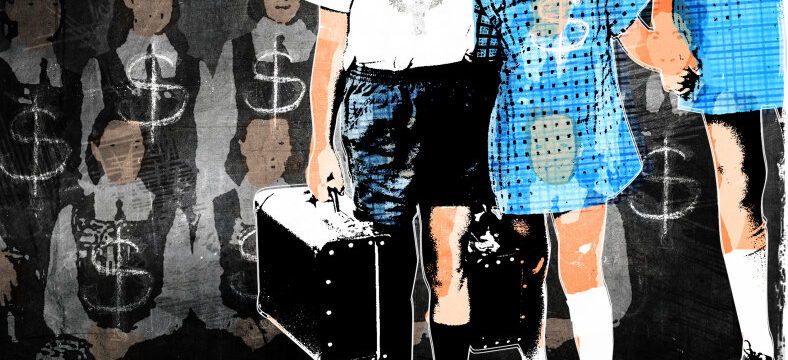Save articles for later
Add articles to your saved list and come back to them any time.
Victoria’s top state schools are keeping pace with their private competitors, despite receiving less than half the income per student.
Analysis by The Age using the top 20 average year 9 NAPLAN results for public and private schools shows the best-performing independent school received an average of $30,109 per student in 2022, compared to an average of $16,480 earned by state schools. State schools are predominantly funded by the state government while independent schools earn income through fees.
The total net recurrent income in 2022 for the top-performing private schools is more than $850 million, compared to less than half that – $413 million – for the public schools.
Victoria’s four selective state high schools all achieved better averages in year 9 NAPLAN testing than their private school peers, pulling scores from 704.4 to 684.8, despite receiving a maximum of $16,982 per student.
By comparison, the best private school was Presbyterian Ladies College, which achieved a NAPLAN year 9 average of 671.2 after receiving $38,050 per student in 2022.
Glen Waverley Secondary College was the next best public performer, with a year 9 NAPLAN average of 626 and an income per student of $14,464.
Victorian College of the Arts was the only public school making more than $20,000 per student, with an income of $27,644 and a NAPLAN average of 608.
Lighthouse Christian College in Cranbourne made the least of the independent high performers, with an income per student of $15,830 and an average score of 639.
VCE high performer Ballarat Clarendon College also came under the $20,000 threshold, earning $17,057 per student but achieving a NAPLAN average of 666, the second highest for private schools in the state.
Net recurrent income for 2022 was released along with 2023 NAPLAN results on the My School website on Friday morning. It includes state and federal funding, as well as fees, charges and parent contributions, and other private sources.
A decade on from the Gonski review, more than 98 per cent of public schools are still funded below the Schooling Resource Standard it recommended, while 98 per cent of private schools are funded above it.
Government funding for private schools has grown almost twice as much as public school funding in that time.
Analysis of the latest international PISA results shows that, when adjusted for socio-economic status, public schools outperform both the private and Catholic sectors.
Economist Trevor Cobbald, from funding equity advocate Save Our Schools, said it was outstanding that public schools with less than half the income of many private schools had achieved comparable or better NAPLAN results.
“It has to be asked just what private schools are doing with their highly privileged income,” he said.
“It appears too much is being spent on the arms race in gold-plated facilities such as wellbeing centres, ornate libraries, more swimming pools and ovals, buying up properties and exorbitant salary packages for principals.
“None of this appears to be better educating their students, more often it appears to engender a sense of entitlement.”
Economist Adam Rorris, whose recent study found Australian private schools are over-funded by $800 million this year while public schools go underfunded by $4.5 billion, said more equitable funding would have the biggest impact on the state schools serving the poorest communities.
Rorris said public school systems spent more money where it was academically needed. Schools serving poorer communities typically received more funding per student than others, simply because they needed it to get results. Private schools were the opposite, he said, with schools serving the most advantaged communities getting the most funding.
“They are the last schools to which you would as a matter of good public policy divert precious resources,” he said. “That is assuming you are interested in value for money and balanced learning outcomes across society.”
Rorris said as communities gained more confidence in the capacity of public schools to deliver good quality education, they would become more representative of the communities they served. In middle and upper-class communities, that would probably organically translate into higher average scores.
“Elite private schools can hardly spend the money they collect from government, parents and the old boy and old girl networks. Most run surpluses every year that often run into the millions,” he said.
“Elite private schools exist to segregate children based on wealth and privilege as much as to educate. They are very good at the former and demonstrably inefficient at the latter.”
The Morning Edition newsletter is our guide to the day’s most important and interesting stories, analysis and insights. Sign up here.
Most Viewed in National
From our partners
Source: Read Full Article
